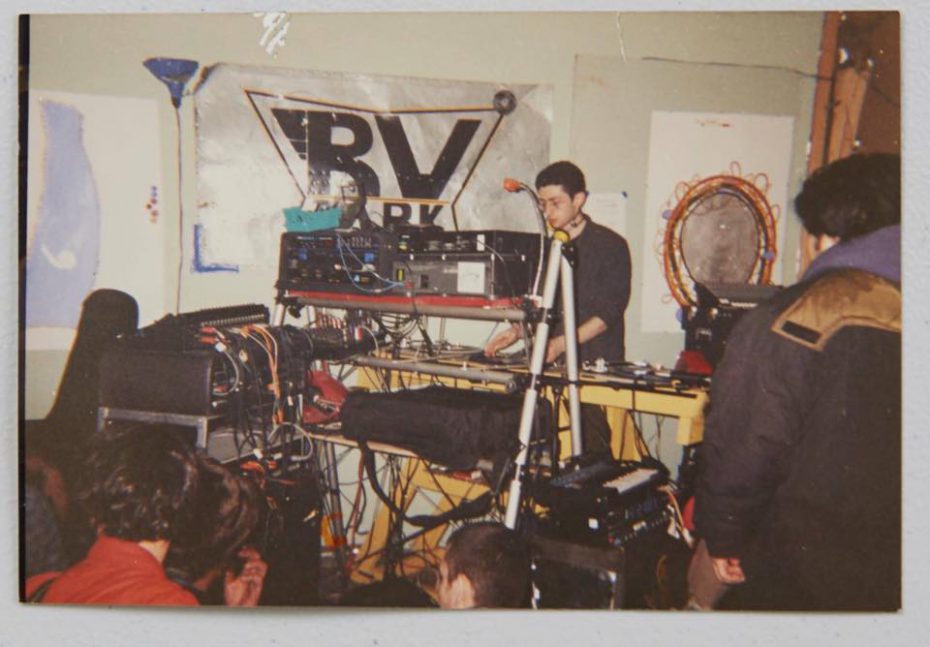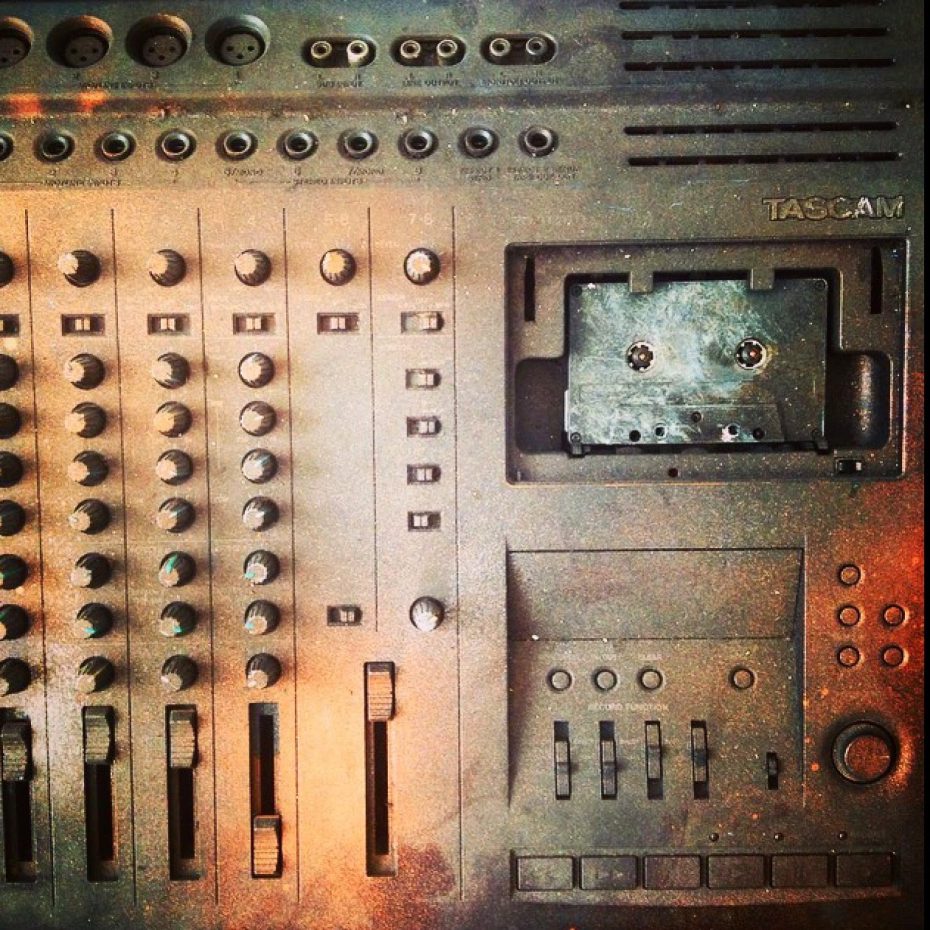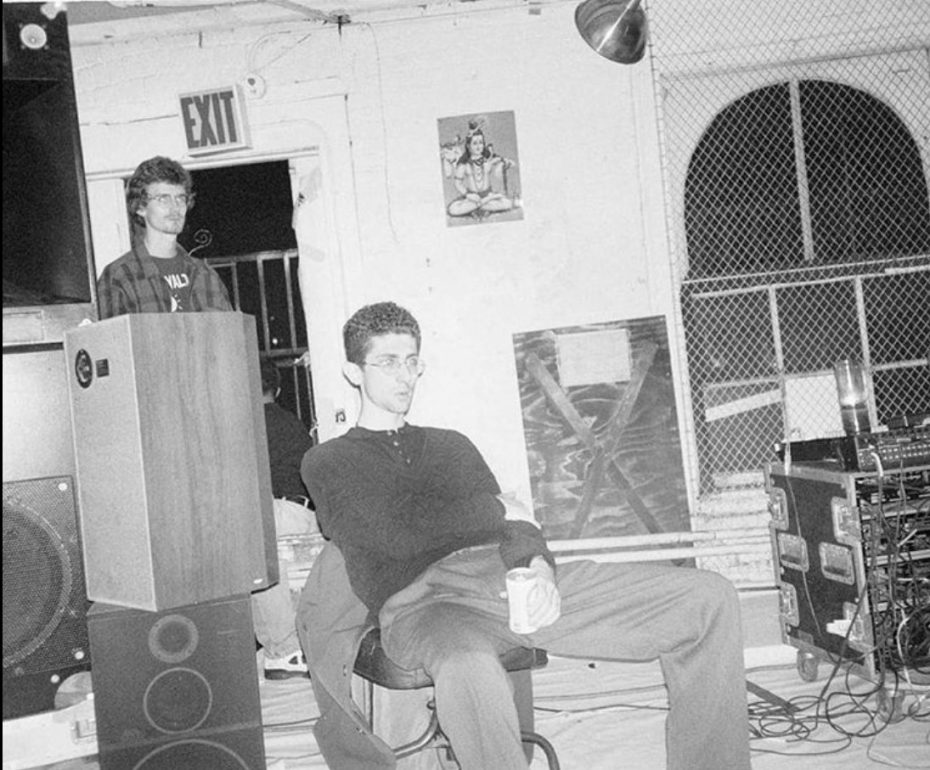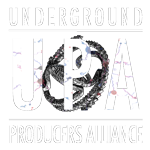How To Kill A Boom Box: Psy Co., Ghost Producer and DIY Cassette Production in the late 80’s and early 90’s.

Psy Co. (aka Psy Company, Psycho) was an underground cassette production outfit known for producing over fifty original albums of experimental music, ranging from a hybrid of instrumental hip hop, radio plays, acid house, free improv, ambient drone, dub and dancehall riddims with the added element of live instrumentation all performed by producer Raz Mesinai on percussion, keyboards, turntables and effects, and sold by Raz on the streets of NYC starting when he was fifteen years old 1989-1993. In the early 90s, Psy Co. also threw a live electronic music performance and DJ series of events based around reggae, dub, dancehall, hip hop, Acid House and experimental turntablism, called Hooky Greens, at The Island Lounge and The Pyramid Club in Alphabet City, New York, featuring first time performances in New York City by Max Glazer (Rihanna, Federation Sound) and DJ Spooky.

Raz Mesinai (Ghost Producer) performing at The RV, Alphabet City, New York, mid 90s. Photo credit Tim Solter.
Raz as well, giving him an outlet for his work prior as a graffiti artist in New York City and comic book writer, Raz was published by Marvel Comics in 1991 at 16 years old (Marvel Presents #99).
Raz’s unpredictable musical output led him to produce in the same way that a comic book writer changes characters for a story, using monikers such as DJ Tab, X-On, The Bedouin (later becoming Badawi), Sub Dub, DJ Tab, Ladyman, Multi-vox, Sonic Worship and Raz Mesinai. Psy Co’s mission was to produce consistently surprising music, while keeping the business side strictly one-on-one, and in person.

Two original cassettes produced by Raz Mesinai, Sonic Worship EP (later becoming the first productions as Sub Dub (1991), and Psy Co Versus DJ Tab (1989), photo courtesy of Raz Mesinai

One of several 4 track cassette recording stations used by Ghost Producer to produce dozens of albums in the early 90s. Courtesy of Raz Mesinai
S – What was your pitch back then?
R – My approach was not to approach at all (laughs). In those days, Mad DIY. Psy Co. business plan (laughs).
S – What year was this?
It was 1989, I’d seen other people selling tapes around Astor Place. I’d also hang out in the Lower East Side, West Village, you know, pick up the arts crowd. I remember Roger S. being out on Astor Place and others, and I never witnessed any sort of aggressive sales pitches going on – just giving each other respect and space no matter the difference in styles. It was all good till the cops started cracking down on us and found a big knife on me. It was a different era back then in NYC and very unpredictable. Luckily I got off and I stopped selling my music that way by 1991 or so, not because of the incident, although that definitely didn’t enhance the experience. But by then I was doing more live sets, throwing parties with Jaymz Nylon and Max Glazer, and going out more. Of course, I got into drinking and drugs as to be expected and I began working on writing fiction. I got a short story into Marvel in 1991 and had a lot of ideas I wanted to fulfill in different areas of the arts.

But I got to say, the business, when in the street like that, holds a lot of options that you do not get once you’re in the system. Anyone who does it, I know why. It’s still a more profitable way and you have a one-on-one dialog with the person buying it. This is a bit more present in a platform like Bandcamp where you do get their email if the customer chooses – great idea on their part, you cannot do that on most other platforms.
S – So before that, how did you reach the stage of making these tapes in the first place?
R – I started by sampling but not with a sampler. I would use two or three boomboxes in an array, an answering machine and a turntable in the center as the source, the cassette recorders and players for overdubbing using the pin hole microphones on the boomboxes, no cables or direct lines. This was in 1983 so I had no idea what I was doing.

Raz Mesinai performing on the Tombak with DJ Olive (Sonic Youth, We) on his right.
S – How old were you?
R – Ten. So using those as the only input, and after going back and forth overdubbing “out loud”—as I didn’t use headphones either—it accumulated a lot of noise that I felt was undesirable at the time, and so I mostly refrained from playing my music to my friends.
S – Why refrain?
R – It was not developed by then. I was known as a graffiti writer, but I did try to hit off break-dancers in my neighborhood in NYC – they were the reason I started in the first place. The culture around us consisted of three disciplines: breakdancing, graffiti and hip-hop music. We had graffiti down – I could not break for shit but it was all around us. The production of the music that breakers were dancing to though, that was a mystery.
S – Right, no access either to those studios.
R – Yes, but more than that, most of the sounds were highly influenced by European synth pop dance music from artists like Kraftwerk. There were even books coming out on how to breakdance or write graffiti, but the sounds that crews were breaking to, that was a mystery. Who could afford the synths on a lot of those records that came in from Europe other than Herbie Hancock? Remember, Planet Rock is a classic hip hop song and it is almost entirely made of samples from Kraftwerk. This big sample happened partially because there was a mystery behind how it was achieved.

S – It stood for something.
R – It stood for power, wealth, and also something futuristic, utopian, liberating. A lot going on there. Anyway, it wasn’t until around 1988 when I first met Juma Sultan that I got my hands on some real gear. My mother showed him what I was working on with the boomboxes laid out in the corner of our kitchen floor and he said, “That’s what the Jamaicans in the Bronx are doing!” So he loaned me a ribbon microphone, a multi-vox echo chamber, a reel to reel and probably just as importantly, he also persuaded me to include my percussion playing into the music and to refrain from overdubbing. It was partially due to Juma’s ways that I began to move back and forth between straight sampling, to playing percussion and piano along with various forms of effects processing, usually the multi-vox echo chamber with sound on sound that I still have, guitar pedals inspired by Jimi Hendrix—who Juma Sultan played and recorded with—so the link reconnects there, and feedback leaking in. I got into the idea that all sounds in the room added a sort of signature to the productions – it was on purpose. Juma’s guidance was profound and the amount of love he showed me as a kid, well, I’ll never forget it.
https://www.youtube.com/watch?v=A1W6mbl1wMs
S – Do you think you have been playing around with the same ideas all this time?
R – I try to focus on building systems for me to make music, film, art or whatever I am trying to do, in. That’s always the first and most important part. I cant do this unless that is developed.
S – Yet you constantly have new albums and tracks coming.
R – I get it, but that is because I put together a tight system. Once its ready to play and record and do all the things I need doing for that particular concept, then it flows. If you have a stiff studio, something pushing your elbow the wrong way, or an uncomfortable chair, you better starve for a week and buy that $3,000 Martha Stewart love seat.
S – Did you always remain a “bedroom producer?”
R – I worked in big studios later in the 90’s, but now I have gotten into this nice buzz with my old gear in cahoots with the new modern technologies. I am not shy of technology, it’s an industry that I am interested in, among others. Anything to do with the transmission of sound, art or culture, what is controlling what, how it works, where is it leading, where did it start, all of that has to do with the tools that I need to know and own and control so that I can do my work, which is not attached to the idea of following the rules. It will not be popular, that is not the point, it is supposed to be under the radar.
S – What do you think when people say that everyone “has their time?”
R – Nonsense to a time traveler.
Links:
Psy Co on Bandcamp
Bedroom Beats & B-sides, by Laurent Fintoni is the first comprehensive history of bedroom producers spanning back 30 years.
Bandcamp Daily Hidden Gems – How To Kill A Boombox

